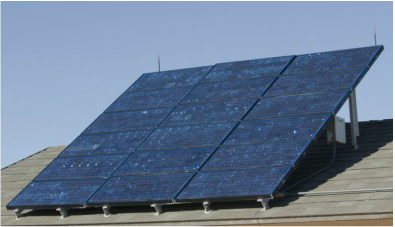| Upgrading your property so it’s energy-efficient is not only good for the environment, it can also benefit your bottom line. Australia’s federal and state governments offer a number of rebates and incentives to investors and home owners who include eco-friendly features on their properties. Renewable energy systems Your property can generate its own power if you install renewable energy systems such as solar photovoltaic (PV) panels, solar water heaters or air source heat pumps. |
The federal government’s Small-scale Renewable Energy Scheme offers an incentive to install eligible systems.
Once the system is in place, you may be entitled to small-scale technology certificates (STCs). When your property’s renewable energy system generates more power than it requires, STCs are created. These STCs can then be sold for cash to businesses, such as power retailers, who have a legal obligation to purchase them to meet their renewable energy obligations. The incentive scheme is managed by the Clean Energy Regulator, who also sets the market price for STCs.
Some states and territories provide additional incentives for renewable energy, including feed-in tariffs for supplying excess power to the electricity grid. The amount of the tariff varies from state to state and between individual electricity retailers.
The user enters into a fixed-term contract with the electricity distributor, so the tariff is usually paid to the person responsible for the electricity account. As an investor you might not get the direct advantage, but you may find a tenant willing to pay higher rent due to the reduced power bills and environmental feel-good factor.
Battery storage rebates
If your investment property is within the City of Adelaide, there’s the opportunity to take advantage of grants up to $5,000 for installing a battery-based energy storage system. This recently announced initiative is aimed at encouraging people to reduce their carbon footprint. Other local governments are considering similar schemes.
Rebates for efficient energy use
There are a variety of rebates and financial incentives offered in each state and territory to encourage home owners to switch to more efficient-energy options. These include:
This article originally appeared on yourloanhub.com.au
Once the system is in place, you may be entitled to small-scale technology certificates (STCs). When your property’s renewable energy system generates more power than it requires, STCs are created. These STCs can then be sold for cash to businesses, such as power retailers, who have a legal obligation to purchase them to meet their renewable energy obligations. The incentive scheme is managed by the Clean Energy Regulator, who also sets the market price for STCs.
Some states and territories provide additional incentives for renewable energy, including feed-in tariffs for supplying excess power to the electricity grid. The amount of the tariff varies from state to state and between individual electricity retailers.
The user enters into a fixed-term contract with the electricity distributor, so the tariff is usually paid to the person responsible for the electricity account. As an investor you might not get the direct advantage, but you may find a tenant willing to pay higher rent due to the reduced power bills and environmental feel-good factor.
Battery storage rebates
If your investment property is within the City of Adelaide, there’s the opportunity to take advantage of grants up to $5,000 for installing a battery-based energy storage system. This recently announced initiative is aimed at encouraging people to reduce their carbon footprint. Other local governments are considering similar schemes.
Rebates for efficient energy use
There are a variety of rebates and financial incentives offered in each state and territory to encourage home owners to switch to more efficient-energy options. These include:
- Choosing to connect your hot water or a pool pump to an economy electricity tariff.
- Installing energy-efficient cooling and heating systems.
- Switching to LED downlights or compact fluorescent light bulbs.
- Installing water-saving showerheads.
- Replacing wood heaters or open fireplaces with mains-supplied gas heaters.
This article originally appeared on yourloanhub.com.au


 RSS Feed
RSS Feed